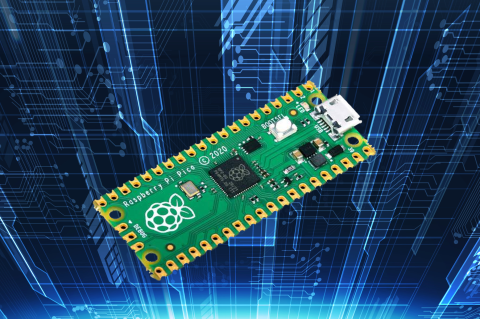US Department of Transportation Seeking Alternatives to Advanced Navigation GPS

GPS-capable devices range from your phone to your smartwatch; simply type in your destination and follow the directions. Simple, right? According to the Washington Post, we should all stop using GPS as it’s ruining the navigation centers of our brains. Despite the neurological effects on perception and judgment, the U.S. Department of Transportation (DOT) aims to find alternatives to GPS to provide redundancy.
What started as a defense initiative has now expanded to the civilian sector. In October 2019, Space News reported that the Army began seeking viable alternatives to the GPS satellite fleet due to the threat that enemies could jam the system, leaving mission-critical navigation systems without a backup. According to Gen. John Murray, commander of Army Futures Command, the U.S. Army must become less dependent on GPS-enabled devices as adversaries field more advanced jamming systems: “We have to have multiple ways of getting PNT [positioning, navigation and timing] in the future battlefield because of the threat of jamming.”
The Defense Innovation Unit later received 25 proposals for handheld navigation systems that don’t rely on GPS satellite signals. Now this month, the U.S. DOT is set to deliver demonstration results of potential alternatives to GPS. New anti-jamming systems will deliver a safeguard for U.S. forces in Europe and the Korean Peninsula, but the next-generation of PNT systems will need to operate without GPS or any other Global Navigation Satellite System (GNSS).
The Current and Future GPS Ecosystem
The GPS constellation currently consists of 24 satellites positioned in six earth-centered orbital planes. Each plane contains four operational satellites and room for one more satellite in each orbital plane, giving a total of 30 possible satellites. Satellites in the constellation are constantly being upgraded or replaced, which incurs significant costs over time. Despite the costs involved in maintaining the system, the civilian sector receives over $1 trillion in economic benefits annually. Given the huge level of benefit to the civilian sector, there is a major incentive to continue maintaining the system and even improve it.
A previous GPS backup was built on the Loran-C radio navigation system. This World War II-era system remained in use in various forms until it was dismantled in 2010. The search for other alternatives has been in the works since 2014. The new proposed systems will need to function without reliance on traditional GPS, or the current alternative GLONASS, BeiDou, NavIC, Galileo, or QZSS systems.
As it turns out, going back to the Loran system and providing some innovative upgrades may be the solution. The system is still well-understood and standardized, providing a framework for innovators to develop new GPS alternatives.

eLoran May Complement GPS
An advanced Loran-C system has been a major topic of research recently, and a candidate replacement system called eLoran by UrsaNav was presented to DOT. The Loran-C system essentially used a large antenna that emits a short train of amplitude modulated pulses at AM radio frequencies. The antenna for the new eLoran system presented to DOT is small enough to fit on a trailer, yet powerful enough to be detected reliably at distances near 1,500 km. Advanced systems work with carrier frequencies of 100 kHz (~20 kHz bandwidth) with a 20 kHz pulse rate. Each pulse in Loran-C is given phase coding, and a reading of the phase of each pulse is required to distinguish their order of arrival.
A block diagram showing how signals are received and processed with this system is shown below. Detection is provided using a sliding correlation to detect phase differences between arriving pulses. Averaging multiple readings provides clean data to use in threshold calculation and ultimately estimates the receiver’s location with respect to the system transmitters.

Ideally, this system could function using triangulation with received signals to determine orientation and location. Adding a fourth eLoran signal would provide a reading of elevation, just as in GPS. For extremely fine navigation, we may see newer systems go a step further in signal processing by following the modulation scheme used in the Loran-D and Loran-F systems.
At the PCB level, the main challenge is not one of complex board layout as in typical R.F. systems, but the challenge is in digital signal processing to extract a low-level AM signal from a noisy background. Just as is the case with GPS jamming, and even antenna self-jamming, a strong enough background signal could mask the eLoran signal and prevent accurate positioning. In the event of strong background radiation at 100 kHz, the other danger is spoofing. The U.S. Coast Guard and other armed forces commands have collected numerous reports of GPS spoofing, particularly by Russia in politically sensitive areas like Crimea, Ukraine, and Syria.
The U.S. government has been taking eLoran seriously since 2016, when the National Institute of Standards and Technology (NIST) released a Small Business Innovation and Research (SBIR) solicitation to develop eLoran receivers as integrated circuits. Whether this crosses into the civilian sector remains to be seen. As is the case with electronics manufacturing and supply chains during the COVID-19 crisis, we’ve seen that the civilian sector is not always so forward-looking on these matters and tends to react after a disaster occurs. It’s up to the electronics industry to develop innovative solutions that are also cost-effective should we ever need alternatives to GPS.
The circuit simulation and PCB design features in Altium Designer® are here to help innovators working in this new area. Layout engineers will have access to a complete set of tools for stackup design, impedance control, and much more. The system-level design and modeling tools can help you design a signal processing chain for Loran-C or other GPS alternatives.
Now you can download a free trial of Altium Designer and learn more about the industry’s best layout, simulation, and production planning tools. Talk to an Altium expert today to learn more.











